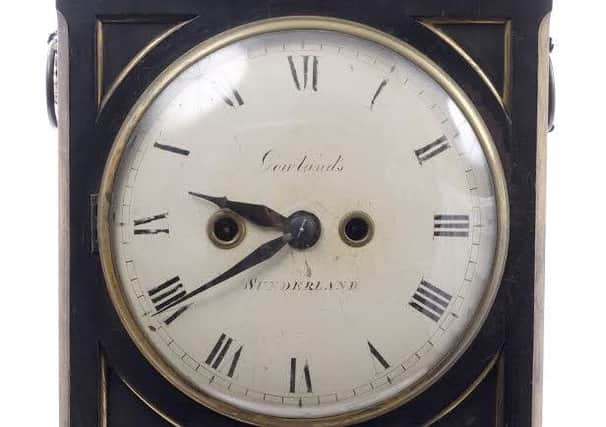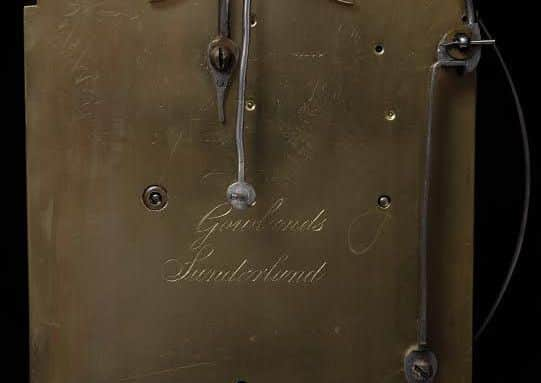One of Sunderland's oldest clocks expected to fetch hundreds of pounds in auction


The so-called bracket clock is ‘signed’ on the back and the front ‘Gowlands Sunderland’ and was made during the reign of King George III, between 1760 and 1820.
It is expected to sell for between £300 and £500 at Reeman Dansie Auctions in Colchester, in Essex,on Tuesday afternoon.


Advertisement
Hide AdAdvertisement
Hide AdAccording to auctioneers Reeman Dansie the Sunderland clock has ‘an eight day twin-fusee repeat movement striking on a bell, signed: Gowlands,Sunderland; its white enamel dial with ringed winding holes and Roman numerals also signed: “Gowlands,Sunderland.”
The clock is in “an ebonised architectural case with brass mounts,fish-scale side frets and garland ring-handles, on four ball feet.”
According to G.H.Baillie’s Watchmakers & Clockmakers of the World, Clement Gowland was a watchmaker in Sunderland between 1780 and 1800 although members of Mr Gowland’s family were running the business after those dates.
From around 1825 until around 1840, William Gowland and his brother Clement were running the business and for a brief period in the 1830s their sister, Ann,was also a partner.


Advertisement
Hide AdAdvertisement
Hide AdIn 1842, William Gowland announced in an advertisement that he was leaving Sunderland and offered a 20% discount on the goods at his shop in High Street, Sunderland.
But for some reason Whickham-born father of five William Gowland did not leave Sunderland and according to the 1851 Census, was still running the family business there, with the help of his teenage son, Thomas.
The Gowlands were in business in Sunderland High Street, when Sunderland’s greatest artist, Clarkson Stanfield,was born nearby on December 3, 1793, above a shop, which then stood on the eastern corner of Playhouse Lane, later Drury Lane, where it joined Sunderland High Street.
So Clarkson Stanfield’s parents may well have known the Gowlands, or may even have been friends or acquaintances of the Gowlands.
Stanfield later became a close friend of Charles Dickens.